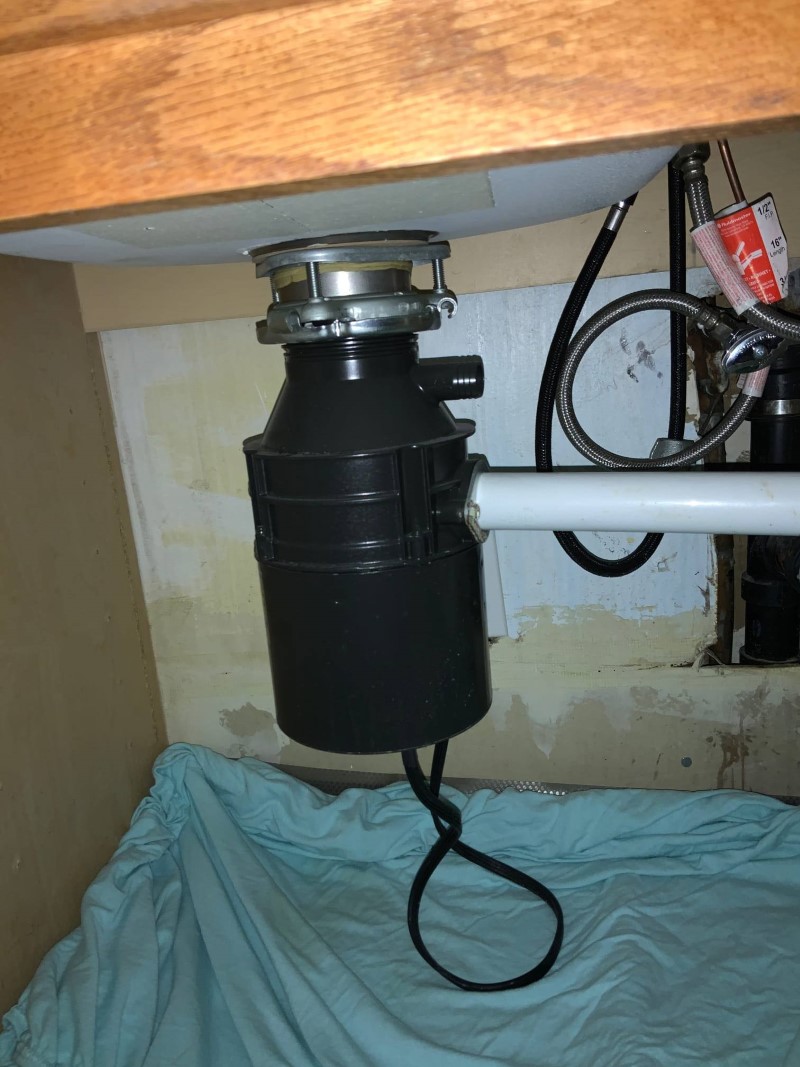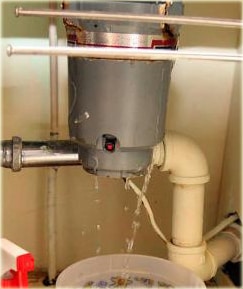Leading Methods for Resolving a Leak in Your Garbage Disposal
Leading Methods for Resolving a Leak in Your Garbage Disposal
Blog Article
Just how do you actually feel in relation to Why Is My Garbage Disposal Leaking From the Bottom??

Garbage disposals are vital kitchen appliances that aid in getting rid of food waste effectively. However, a dripping garbage disposal can be an irritating and untidy problem to take care of. Fortunately, lots of leaks can be dealt with quickly with a couple of easy actions. In this article, we will review how to take care of a leaking garbage disposal properly.
Intro
Garbage disposals are mounted under kitchen sinks and are developed to shred food waste into smaller sized items, allowing it to pass through the plumbing system quickly. While these tools are typically trustworthy, leakages can happen gradually because of deterioration, loose connections, or damage to the unit.
Typical Root Causes Of Leakages in Rubbish Disposals
Worn Seals and Gaskets
Seals and gaskets play a crucial function in avoiding water from leaking out of the waste disposal unit. Over time, these components can degrade, causing leakages around the disposal system.
Loose Links
The links in between the waste disposal unit and the pipes system can end up being loose in time, triggering water to leakage out during operation.
Cracks or Holes in the Disposal System
Physical damages to the waste disposal unit, such as fractures or openings in the housing, can also result in leakages.
Identifying the Source of the Leakage
Prior to trying to take care of a leaking garbage disposal, it is essential to determine the resource of the leakage. This can usually be done through visual evaluation or by performing straightforward examinations.
Visual Examination
Check the garbage disposal system carefully for any type of indicators of water leak. Pay close attention to locations around seals, gaskets, and connection points.
Checking for Leaks
One method to test for leakages is by running water via the disposal system and checking for any noticeable signs of leakage.
Devices and Products Needed for Dealing With a Dripping Waste Disposal Unit
Before beginning the repair work procedure, gather the needed devices and materials, consisting of a screwdriver, flexible wrench, plumbing professional's putty, replacement seals or gaskets, and epoxy or patching material for fixing fractures or openings.
Step-by-Step Overview to Taking Care Of a Leaking Garbage Disposal
Turn Off the Power
Before trying any repair services, ensure that the power to the waste disposal unit system is switched off to avoid the danger of electric shock.
Situate the Leak
Identify the exact area of the leak and identify the cause.
Tighten up Links
Use a wrench to tighten any type of loosened links in between the disposal system and the plumbing system.
Change Seals or Gaskets
If the leak is due to used seals or gaskets, remove the old components and change them with new ones.
Patching Fractures or Openings
For cracks or holes in the disposal system, usage epoxy or a suitable patching material to secure the damaged location.
Checking the Garbage Disposal After Repair
Once the fixing is total, examine the waste disposal unit by running water via it to guarantee that the leak has been dealt with.
Preventive Maintenance Tips to Prevent Future Leakages
To stop future leakages, it is necessary to carry out routine upkeep on your garbage disposal. This includes keeping it clean, avoiding putting non-food things or hard objects down the disposal, and occasionally looking for leakages or various other issues.
Conclusion
Finally, taking care of a leaking garbage disposal is a fairly straightforward procedure that can be completed with standard devices and materials. By following the steps described in this post and exercising precautionary maintenance, you can keep your garbage disposal in good working problem and avoid pricey fixings in the future.
HERE’S HOW TO FIX YOUR GARBAGE DISPOSAL
WHAT TO DO IF SOMETHING IS STUCK IN YOUR GARBAGE DISPOSAL
If the impeller won’t turn, there’s probably something stuck in the disposal. It could be a steak bone or peach pit, although plumbers report pulling all sorts of inappropriate objects out of disposals, such as bottle caps or aluminum foil. Make sure power to the disposal is off, and look inside to see if you can see the source of the jam.
Never stick your fingers in a disposal. Pull out anything you see with tongs or pliers.
If the disposal still won’t work, it may be time to call a plumber or consider buying a new disposal. GEM Plumbing & Heating is here for all of your garbage disposal needs.
WHAT TO DO IF YOUR GARBAGE DISPOSAL DRAIN IS CLOGGED
Take everything out from underneath your sink and put a bucket or other container under your disposal to catch any water that drains out. Disconnect your disposal from the power supply. If it’s plugged into a wall outlet, unplug it. If it’s hardwired into an electrical box, go to the electrical panel and turn off the breaker for the disposal. Pour ¼ cup of baking soda into the drain, followed by ½ cup of white vinegar. Give the solution a few minutes to fizz and do its work. Look into the disposal with a flashlight to see if you can see an object that might be causing the clog. If you see it, remove it using tongs or pliers. MORE TIPS ON DEALING WITH A CLOGGED GARBAGE DISPOSAL
Never use drain cleaner in a garbage disposal. It can damage the plastic parts inside the disposal. You can also be splashed with the caustic liquid while working to clear the clog. Beware! Never stick your fingers into a garbage disposal. Trust us — not a good idea. In many instances, your dishwasher drains through your garbage disposal. This allows the disposal to grind any large food particles that may be drained out of your dishwasher. There are some jurisdictions, however, where the plumbing code prohibits such a connection. WHAT TO DO WHEN YOUR DISHWASHER DRAINS THROUGH THE DISPOSAL
Run some water in the sink so your plunger has at least a ½-inch of water to create a seal and plunge vigorously up and down several times. You may need to repeat this several times. Run hot water down the drain to clear any residue that remains.

As an avid person who reads about Why Is , I imagined sharing that piece of writing was a smart idea. Do you know about anybody else who is excited about the subject? Why not share it. I appreciate reading our article about Why Is My Garbage Disposal Leaking From the Bottom?.
Visit The Following Page Report this page